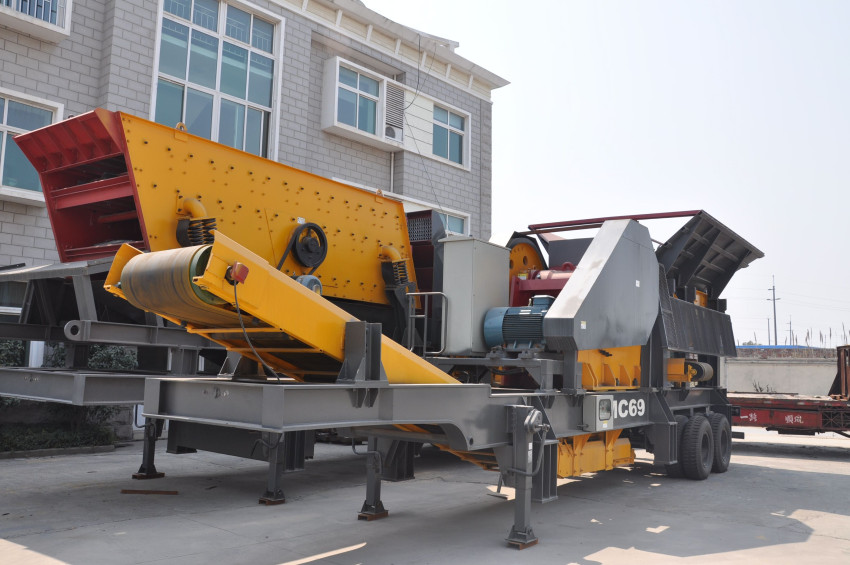
Configuration of production units affects performance
The configuration of production units in the stone crusher plant affects the entire plant performance. Here is the result of an optimization procedure that involves the use of computerized reasoning to simulate the operation of any real plant. The model is utilized to shape agent degree information for your crushers and enhance the final product gradation. Its use is discussed in this article and strategies to optimize the model are sketched.
Impact and rolling compression make the stone crusher plant yield a better output by using a lower noise level and power consumption
The impact and rolling compression crushers are employed in tandem to make the greatest possible output with minimum noise and power consumption. Both impact and rolling compression produce equal amounts of pressure, creating a lower power consumption and noise level. The crushers are supposed to withstand a number of abrasive surfaces and they are particularly efficient within the crushing of hard rocks.
Gyratory crusher
An effective stone crusher can have several characteristics, including: its size, the volume of strokes a minute (strokes/min), and the nip angle. The nip angle signifies the angle from which the crushing chamber will open, that can determine how many particles will likely be crushed per cycle. The space between your plates of your crusher), also known as the OSS, determines how large a particle will likely be whenever it drops out of the crushing chamber.
Symons cone crusher
A Symons cone crusher is a proven choice for high-performance crushing. Its advanced hydraulic system allows it to operate efficiently and reliably, letting you give attention to other matters which need attention. The cone crusher needs to be choke-fed for optimum efficiency and productivity, and it ought to be properly sized for optimal yield. It needs to also be fed with the appropriate circuitry, including a hopper and feeder. A suitably-sized feed system reduces side loading and premature wear.
Gyratory crusher's cavity profile
This paper presents a numerical style of the Performance of a Gyratory crusher plant, that has been developed to simulate the behaviour of any crushing plant. It uses a mix of a numerical and physical method of solve the situation. Its results show the impact of operational parameters in the performance of the gyratory crusher. An evaluation is produced between the base case as well as the non-uniform filling case. The final results of simulations of varying open-side settings, rpm, and Bond's equation can also be presented.
Adequate screening capacity downstream of your crushing circuit
While many producers would want to improve the tons hourly of material that will pass throughout the screen, there are several methods to increase screening capacity without having to sacrifice efficiency. Screens are employed to separate aggregate material into different sizes. Based on the scale of the stone, the screens could possibly have several decks. Screening efficiency is improved by setting the screen's parameters. A vibrating screen work at its maximum capacity after it is properly adjusted.
Gyratory crusher's CSS
The minimum safe closed side setting (CSS) for a gyratory crusher varies depending on the crushing machine, character of your feed, and choke-feed and regulated feed conditions. Smaller CSS settings than those published by manufacturers are often possible, however they are generally not considered good practice. Experimentation with smaller CSS settings should be followed by a close study of power consumption.
Gyratory crusher's feed gradation
A Gyratory crusher reduces the size of rocks to a minimum measurements of about ten or fifteen cm by compressing them. This method reduces the dimensions of rock particles as much as five to eight times. The actual size of feed particles is controlled by gyratory's setting. This particular crusher is generally built with hydraulic setting adjustment systems to control the feed gradation and product size. In primary crushers, the gyratory is placed as low as possible of 190 rpm. A secondary cone crusher operates at the very least of .75 gyratory setting.
Gyratory crusher's operating principle
The Gyratory crusher's operating principle inside a stone crusher plant is nearly the same as those of a jaw or cone-type crusher. Within a Gyratory crusher, the crushing head is big, and also the part of the discharge opening is directly proportional on the head diameter. The crushing chamber is deep and curved, providing a deep and acute crushing angle while maximizing capacity. The contour towards the bottom of the crushing chamber allows for various initial settings. Lower tier concaves are installed to have the desired setting and capacity.
Fote stone crusher plant
The Fote stone crusher plant's performance is extremely influenced by its configuration. Depending on the scale of the quarry, rock feed materials, and using the very last products, different plants might have vastly different layouts. The procedure of design is usually depending on connecting the development unit models. The input and output characteristics are analyzed in detail. The design of the crushing plant must are the sequence of product demand, the desired product quality and cost, and operating costs.
Click reference: https://aimixgrupo.com/planta-chancadora-de-piedra-bolivia/





